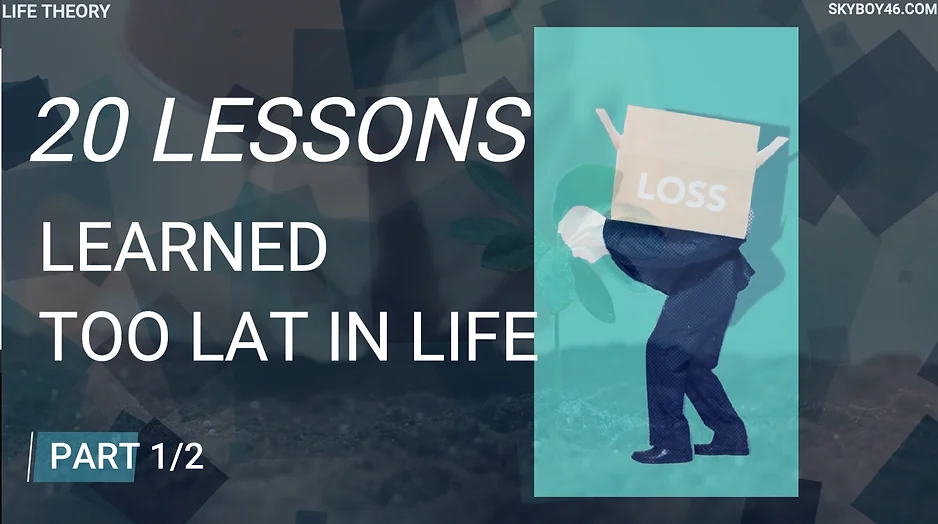What if the key to motivation isn’t money or rewards, but something deeper? Dive into the science of what truly drives us—control, competence, and connection. Discover why financial incentives often backfire and how intrinsic motivation can unlock your full potential. Are you languishing or thriving? It’s time to reignite your inner fire and take charge of your life.
SUBSCRIBE: https://www.youtube.com/@LifeTheory46
VISIT: https://linktr.ee/lifetheory46
Get You Monthly Life Stories in Advance & Our Premium Learning Packs HERE:
Unraveling the Force Behind Motivation
Let’s be real—sometimes it feels like we’re running in place, despite having countless things to get excited about. In this world of constant rush and distraction, it’s all too easy to lose the drive to push forward. Today, we’re here to untangle what fuels that fire within, and how we can reignite it when it starts to dim. But before diving into the heart of the matter, take a moment to ground yourself. Tune into the present, feel the steady rhythm of your heartbeat, and let everything else fall away. Take a deep breath in, hold, and release—let’s get started.
Now, let’s cut straight to it—how many times lately have you felt drained of motivation? There’s a term for that sensation of stagnation and emptiness: languishing. It’s a state of being described by organizational psychologist Adam Grant as hovering in that space between thriving and despair. It’s not burnout, where you’re utterly exhausted, nor is it depression. It’s more like a lack of zest, a life on autopilot.
So, what actually gets people to do things? Neuroscience gives us a simple framework: motivation generally comes in two forms. You’re either moving towards a goal or running away from a negative outcome. This dual nature is seen everywhere in life—from why we go to work to why we drag ourselves to the gym. In a professional setting, we often assume that more money equals more motivation. Higher paychecks are supposed to translate into higher performance. But research suggests otherwise.
Daniel Pink, an American author, points out that rewards like money can narrow our focus, which isn’t always helpful. When tasks require even a bit of cognitive skill, bigger rewards can actually lead to worse outcomes. Studies from the London School of Economics have shown that financial incentives can backfire, lowering overall performance because, eventually, the thrill of the reward wears off. We get used to it, and soon enough, the motivational boost fades.
That brings us to the real question—if money alone isn’t the answer, what drives us forward? The key lies in intrinsic motivation, the type that comes from within and makes you feel like you can conquer anything. Scott Geller, a psychologist and professor at Virginia Tech, suggests three simple questions to gauge whether you’re truly self-motivated in any given area of life: Do you believe you can do it? Do you think your actions will lead to the desired outcome? And, is it worth the effort? If you find yourself saying “yes” to all three, chances are you’re feeling pretty empowered.
A sense of empowerment also comes from feeling like you have a choice in the matter. Ellen Langer, a psychology professor, argues in her book Mindfulness that perceived choice is essential to feeling motivated. When you believe you have options, motivation naturally follows. Without it, you’re left feeling stuck in survival mode, where motivation is all about escaping something unpleasant rather than reaching for something meaningful.
At the core of intrinsic motivation are three psychological needs that are foundational not just for children, but for all of us—control, competence, and connection. These “three C’s” are the pillars that support a deeply fulfilling life, motivating us to engage fully and aim higher.
Control is about having autonomy in your decisions. If you feel like life is just happening to you rather than because of you, that’s when motivation begins to wane. It’s crucial to feel that you can shape the direction of your life and have a say in your circumstances. If a certain area of your life feels devoid of this, ask yourself: do you feel trapped, or do you sense some freedom?
Then there’s competence, the ability to master a skill or grow in a particular area. When you can see yourself getting better, evolving, or building toward something greater, it feeds your motivation like nothing else. It’s that sense of progress, no matter how small, that makes the grind worthwhile.
Finally, there’s connection. Human beings are wired for it. We can achieve good things on our own, sure, but truly remarkable feats are often accomplished together. Belonging isn’t just a social nicety—it’s a primal need. Throughout history, sticking with a tribe meant survival, and even now, our brains are still attuned to that ancient truth. Being part of a community, feeling like what you do impacts others, fuels a deeper kind of drive. It’s not just about completing tasks; it’s about leaving a mark and knowing that what you do matters.
So, ask yourself—are you connected in the life you’re living? Do you feel like the things you’re doing are significant, not just to you but to those around you? These questions aren’t easy, and the answers might require some soul-searching. It’s okay to take your time with them because finding out what truly motivates you isn’t something to rush.
The truth is, the motivation you’re seeking isn’t out there somewhere; it’s within, buried under layers of expectations and habits. It lies in the choices you make, the skills you sharpen, and the connections you nurture. When you understand this, you realize that you don’t have to chase after motivation—it’s already inside you, waiting to be awakened. The question isn’t what drives human beings, but rather, what drives you?
–> Read More Life Stories Here:
https://www.lifetheory.us
https://www.lifetheory.eu
Buy all of our Life Stories & Our Premium Learning Packs. Listen or Read to them anytime you want. Have them Forever.
You can get each monthly lesson on our website at https://www.skyboy46.com/store
SHARE THIS STORY
Visit Our Store
SHOP NOW
www.skyboy46.com & www.myskypet.com
Designed For Pet Lovers & Introverted Souls
Sport, Hobbies, Motivation, Music & Art






~EXPLORE MORE~
www.linktr.ee/skyboy46


